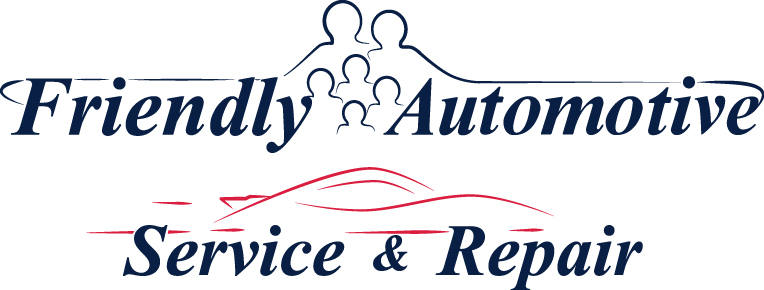The Importance of Maintaining Safe Tires and Knowing When to Replace Them

Maintaining safe tires is one of the most critical aspects of vehicle safety and performance. Tires are the only point of contact between your vehicle and the road, and their condition can dramatically influence braking, handling, and fuel efficiency. Despite their importance, many drivers overlook routine tire maintenance and replacement, putting themselves and others at risk. Here’s why it’s vital to ensure your tires are in top condition and how to determine when they should be replaced.
Why Tire Safety Matters
1. Optimal Traction and Handling
Tires are designed to provide the grip needed for your car to stay stable on the road. Whether you’re accelerating, cornering, or braking, a tire’s tread ensures the vehicle can effectively transfer these forces to the road. Worn or damaged tires reduce traction, especially in adverse weather conditions like rain or snow, leading to longer stopping distances and less control.
2. Preventing Accidents
Poor tire condition is a leading cause of vehicle accidents. Bald or underinflated tires can result in blowouts, skidding, or hydroplaning. This is particularly dangerous at high speeds or during sudden maneuvers. Regularly maintaining your tires significantly reduces these risks and ensures the safety of you, your passengers, and others on the road.
3. Improving Fuel Efficiency
Underinflated tires can increase rolling resistance, meaning your engine has to work harder to keep the car moving. This results in higher fuel consumption and unnecessary costs. Properly inflated tires not only improve gas mileage but also extend the life of the tires, making them a more sustainable choice.
4. Reduces Repair Costs
Preventive maintenance is always more cost-effective than emergency repairs. By regularly checking and servicing your car, you can identify potential issues early and fix them before they become costly problems. For example, replacing a worn-out timing belt is much cheaper than repairing the extensive engine damage that can occur if the belt breaks. Regular maintenance helps you avoid unexpected breakdowns and the high costs associated with emergency repairs, providing peace of mind and financial savings.
5. Legal and Financial Implications
Driving on unsafe tires isn’t just risky—it’s often illegal. Many jurisdictions have minimum tread depth requirements, typically around 2/32 of an inch. Failing to meet these standards could result in fines or penalties. Additionally, driving on poorly maintained tires could void your vehicle insurance in the event of an accident.
When Should You Replace Your Tires?
Recognizing the signs of tire wear and knowing when to replace your tires is essential for maintaining safety. Here are key indicators that it’s time to invest in new tires:
1. Tread Depth
The most commonly cited guideline for tire replacement is based on tread depth. Using a tread depth gauge or the “penny test,” you can measure whether your tires still have adequate tread. Place a penny with Lincoln’s head facing downward into the tread grooves. If the top of his head is visible, your tread is too shallow, and it’s time for new tires.
2. Uneven Wear
Tires wear unevenly for a variety of reasons, including improper alignment, unbalanced tires, or inconsistent tire pressure. Check for areas where the tread is significantly thinner than others. If uneven wear is evident, consult a professional to address the root cause and replace the affected tires.
3. Sidewall Cracks or Bulges
Tires can develop cracks in the sidewall due to aging, exposure to sunlight, or improper storage. Bulges, on the other hand, indicate internal damage, often caused by impacts like hitting a pothole. Both conditions are serious and warrant immediate tire replacement.
4. Age of the Tire
Even if the tread looks fine, tires degrade over time due to exposure to the elements and repeated use. Most manufacturers recommend replacing tires every six to ten years, regardless of their appearance. Check the tire’s manufacturing date, printed on the sidewall, to determine its age.
5. Frequent Air Leaks
If a tire loses air pressure frequently despite no visible puncture, it could indicate structural weakness or an issue with the valve stem. Persistent leaks are often a sign that it’s time for a replacement.
Maintaining Tire Safety
Regular maintenance is the key to extending the lifespan of your tires and ensuring road safety. Here are a few tips:
- Check Tire Pressure Monthly: Use a pressure gauge to maintain the manufacturer-recommended PSI.
- Rotate Tires Regularly: Rotating tires every 5,000 to 7,500 miles promotes even wear.
- Inspect for Damage: Look for punctures, cuts, and abrasions that could compromise tire integrity.
- Align and Balance: Proper alignment and balancing help prevent uneven wear and improve handling.
Conclusion
Safe tires are non-negotiable for ensuring road safety, vehicle performance, and financial savings. Regular inspections and timely replacements not only protect your life but also improve your driving experience. By staying vigilant about your tires’ condition, you’ll keep your vehicle running smoothly and safely for years to come.
For more information, check out Friendly Automotive, your expert Tucson Auto Repair Center and Scheduled Auto Maintenance Shops in Tucson, and Follow us on Facebook and X.
